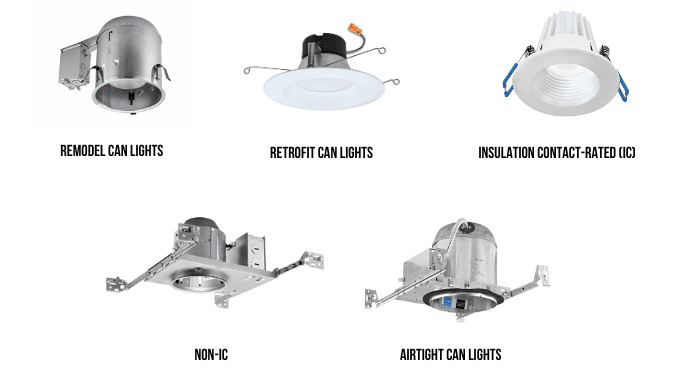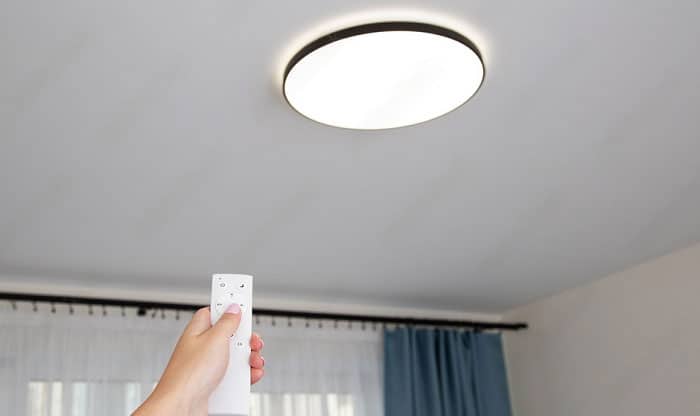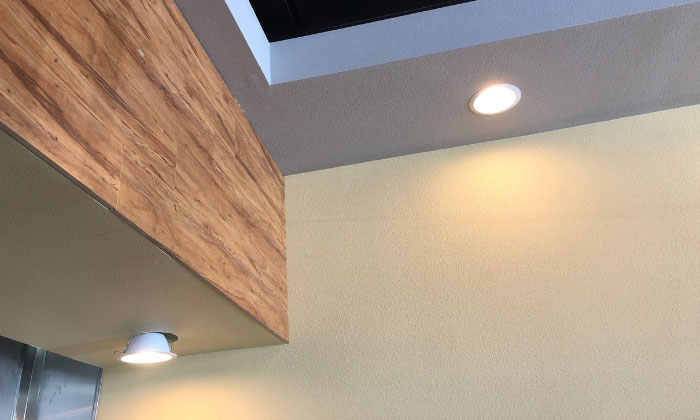

Recessed lighting has become an increasingly popular choice for modern homes due to its sleek and contemporary appearance. However, when choosing between can vs canless recessed lights, homeowners may find themselves in a dilemma.
Recessed lights are any lighting fissure that is installed into a hole in the ceiling, creating a clean and modern look. In this article, we’ll explore the differences between canless vs canned recessed lighting, their pros, and cons, and help you decide which option is best for your home.
Table of Contents
Recessed lights, whether you call them pot lights vs can lights, have been around for decades and are a common sight in most homes.
Recessed lighting vs canned lighting both refer to lights installed in the ceiling. In this case, the bulb appears to glow through the opening while the electrical wirings are hidden and are most suitable for low ceilings.
Recessed lights come in various types depending on their design, functionality, and features. Here are some of the different types of can lights:

For ceilings with limited access above is limited, remodel can lights are meant to install in these ceilings.
These can lights are designed to replace existing non-recessed fixtures or outdated recessed lights without the need for major modifications to the ceiling.
IC-rated can lights are designed for installation in direct contact with insulation.
These lights are suitable for locations without a need for insulation since it does not offer heat protection like the insulation contact-rated light.
These lights are designed to minimize airflow between the conditioned space and the ceiling.

On the other hand, canless recessed lights, also known as wafer lights, have gained popularity in recent years due to their energy efficiency and ease of installation. These lights do not need separate housing since they are directly installed on the ceilings.
Unlike canned recessed lights, these are suitable for high ceilings and can offer a modern look.
The distinctions between canless recessed lights vs can lights are listed below:
| Canned Recessed Lights | Canless Recessed Lights |
| Requires a housing or canister to flush into the ceiling. | Do not need separate housing and directly installed with no canister. |
| Requires more space for the additional housing. | Typically slimmer and more compact and fits into smaller spaces. |
| Installations require additional adjustments on ceiling for the canister and can be more time consuming. | It is easier, and faster to install canless recessed lighting. |
| Has a more traditional appearance, with the visible canister giving a distinct visual style. | Provides a more minimalist appearance since they sit flush with the ceiling surface. It offers a clean and contemporary look. |
| The additional cost for separate housing adds to the overall costs of the fixtures making it more costly than canless lights. | More affordable. |
| More customisation recessed lighting options such as adjustable trims, directional light output, and compatibility with different bulb types. | There is limited customisation and adjustability due to their compact design. |
Advantages of canned recessed lights:
Disadvantages of canned recessed lights:
Advantages of canless recessed lights:
Disadvantages of canless recessed lightning:

Where to put recessed lights?
The placement of recessed lights depends on several factors, including the purpose of the lighting, the size and layout of the room, and the specific tasks and areas you want to highlight.
But the baseline is that the height of the ceiling should be divided by two to establish how far apart recessed lighting should be in bedrooms, kitchens, and living areas. For instance, recessed lighting should be placed around 4 feet apart in an area with 8-foot ceilings.
How long do canless lights last?
Canless recessed lights use an energy efficient and durable bulb like LED light. These lights typically have an average lifespan of about 50,000 hours. This means that if you were to operate the lights for 5 hours per day, they could last over 13 years or even longer.
Tips to install recessed lights
Installing recessed light like a DIY project can be fun but be cautious and follow the popper installation process to keep yourself safe. Here are some tips to help you with the installation process:
What is the difference between LED disc lights vs can lights?
An LED disc light is an alternative to canned recessed lights. They look similar but LED disc light is mounted on the surface of the ceiling and is very thin compared to recessed light.
In conclusion, in choosing between can vs. canless recessed lights, it is important to consider factors like lighting goals, room layout, bulb compatibility, adjustability needs and overall aesthetics when making a decision.
Both types have their own pros and cons, and the choice depends on the homeowner’s preferences, installation requirements, and budget considerations.
Regardless of what type of lights you choose, a well-planned and executed installation of these lights can enhance the ambiance, functionality, and visual appeal of any space.